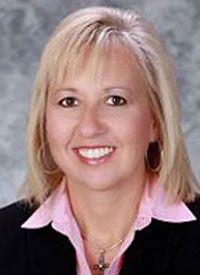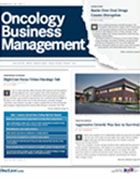New Breed of Denials Is a Test of Fortitude
Many things are happening with payer practices as a result of the plethora of new immuno-oncology agents.
Niesha Griffith, vice president, Cancer Services, for the West Virginia University Health System

Niesha Griffith
Many things are happening with payer practices as a result of the plethora of new immuno-oncology agents. Providers need to be aware of these developments and become substantially more cautious and vigilant about observing payment policies to avoid denials, said Niesha Griffith, vice president, Cancer Services, for the West Virginia University Health System.
Much more is at stake than previously in an unexpected drug payment denial, she said. Not only can practices be hit directly by financial expense but their staff members who regularly deal with payer interaction, billing, and coding can find themselves swamped with additional work. Griffith spoke on the issue at the September Clinical Immuno-Oncology National Conference, in Philadelphia.
Just because the FDA is approving new drugs doesn’t mean that providers can expect private payers to shape their policies respectively, Griffith said. In fact, confronted with rising expense, payers are becoming much more finicky about payment. This makes it necessary for providers to check and double-check approval requests and pre-certifications to make absolutely sure, because denials can still take practices by surprise, she said.
Private payers “originally started out approving everything for the FDA-approved indications, and now they actually have very specific coverage policies. You have to make sure that you meet those qualifications.” Also, she said, performance status rankings for patients have become a factor in approvals. Patients need to be in fairly good condition—cancer notwithstanding—to qualify. “Patients have to have a performance status of 0 to 2 to be able to receive these agents,” she said.
Providers must take care to fully understand payer policies and updates to those policies, and pharmacy personnel should sit in on discussions with payers to share perspective on how well the payment process is working. Payers can be unforgiving for overlooked updates or even small departures from policy, Griffith said. “When they finally do get a policy and post it, it may take a couple of weeks for you to actually get that information, depending on how information flows at your organization. And so, if they have a policy that maybe is a little bit more restrictive than the label and you didn’t know about it, you could end up having a denial, which is essentially what we’ve seen happen. They do not honor any type of retro-authorization.”
Getting the dosage right is another important safeguard to getting paid, Griffith said. Payers are actually calculating patients’ body weight to determine whether the dosage was figured correctly, and payment requests are being denied based on failure to meet this criterion, she added. Surprisingly, she said, drug payments are being held up by dosage calculations that are based on National Drug Code (NDC) labeling. NDC labels include manufacturer recommendations for strength and dosage form. Further, there’s a danger that approvals may not be sufficient for the amount of drug that is needed. Approvals may be disproportionate, meaning that the payer gives approval for nine months of a drug, but when a provider does the calculation it is discovered that there is only enough drug approved for a substantially shorter period of time, such as six months, Griffith said.
Payment for unused or “wasted” drug is a significant issue with expensive new oncolytics, as well, she said. “Not all payers will actually pay you for waste, and some will only pay you for part of the waste, not all of the waste. I’m not sure what the rhyme or reason is behind all of that, but again, it’s just one of the issues we’ve been seeing,” she said.
Oncologists are eager to use new drugs as soon as they become available, in both on-label and off-label applications. This makes it essential for practices to have clear and well-enforced policies on the use of new drugs so that their deployment doesn’t run ahead of the financial processes needed to pay for them, Griffith said. Physician activities should be scrutinized in this regard, “making sure the evidence is there, making sure the peer review is there, making sure that the patient’s been appropriately notified. Just make sure you have all of those pieces in place. If you haven’t done it, these drugs certainly beg it to be done.”
Nowadays, drugs often become available through wholesalers before payers have crafted a policy for coverage, she said. Doctors, meanwhile, have been following the trials and want to capitalize on the potential of these compounds right away. “We call the payer, and they don’t have a policy on that yet. It hasn’t held us back from using it if it’s on-label. We’re still calling, and we’re telling that we’re going to use it,” Griffith said.
Payers are having the same infrastructure problems that cancer centers are having, in the sense that they need to keep up-to-date with new drugs and their uses. It’s important for practices to leverage their knowledge by communicating with payers on these issues as often and as clearly as possible in order to influence their policy decisions, Griffith said. “What I’ve been seeing with the majority of the payers is that they don’t have the resources within their benefits departments to handle the amount of oncology and other medications that are coming to market so rapidly,” she said. “It’s not just oncology. There are a lot of new specialty medications that are also challenging payers.”
Patients also are following drug trials and want the drugs made available to them just as much as the doctors, Griffith said. This means that they, too, are sometimes impatient with the slowness of payers in establishing payment policies for new compounds. Those who have the personal financial resources will sometimes offer to front the costs of the medication just to ensure that they can get it, she said. “People really are willing to pay. There have been people who have said, ‘I’ll just write a check,’ and so we had to work through putting a system in place to actually accept payments from patients because it just wasn’t something that we’ve ever done before.”
Patients should be enrolled in any support programs that are available, and whenever possible, drug manufacturer eligibility personnel should be involved in the verification process to further diminish the likelihood of denials. “They’ll do a comprehensive overview of a patient’s situation, and they’ll be ready to provide support if we need it. It’s there. It’s free. I don’t know why anyone wouldn’t want to use it. Yes, it’s more work. It’s double because you’re doing your own pre-cert, but at the price tag of these drugs, I can’t imagine why you wouldn’t.”
Even after the payment clearances, you can’t assume the money will just ow in like it should, Griffith said, recalling a shocking, recent incident, when it was discovered that owing to a “glitch” at a Medicare contractor, the practice was receiving only about 10% of the actual drug cost, which caused her pharmacy department to go back and check their records “five times” over to make sure what they were seeing was actually correct. “It was amazing to me that we were the only ones in Ohio who had caught it, because there were other large cancer programs and it had been going on for well over a month,” Griffith stated. “It’s not just looking at your denials. I always tell people, ‘You’ve got to look at what you’re actually getting paid.’ I can’t say enough how important that really is.”




